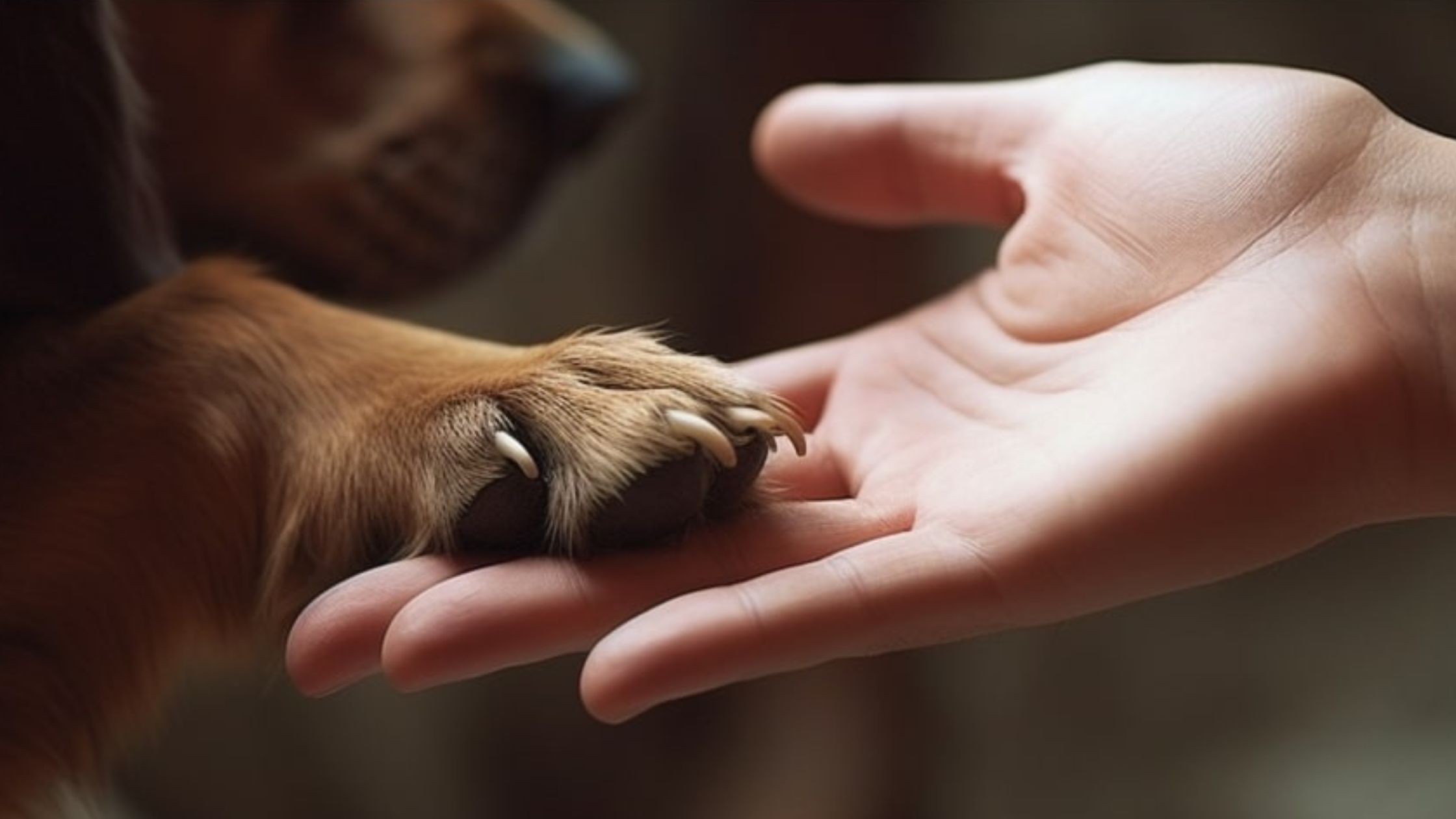
Puppy Pedi Time: Nail Trimming Made Easy 🐶💅
Keeping your puppy’s nails trimmed is an important aspect of their overall health and well-being. Long, untrimmed nails can lead to discomfort, pain, and even injury for your pup. However, many dog owners find this task challenging, especially when it comes to young, squirmy puppies. In this guide, we’ll discuss the importance of nail trimming for puppies, explore the different tools and techniques available, and offer tips to make the process as stress-free as possible for both you and your furry friend. Let’s get started!
Introduction
The importance of nail trimming for puppies
Nail trimming is crucial for puppies because it helps prevent potential health issues like ingrown nails, infections, and injuries caused by overgrown nails. Additionally, regular nail trims help puppies maintain proper posture and avoid discomfort while walking or playing.
The challenges of puppy nail trimming
Some common challenges faced by pet owners when trimming their puppy’s nails include fear of cutting the nails too short, dealing with a squirmy puppy, and overcoming negative past experiences with nail trimming. Our goal is to provide you with the knowledge and tools to overcome these challenges and establish a positive nail trimming routine.
Understanding Your Puppy’s Nails
Anatomy of a puppy’s nail
A puppy’s nail consists of a hard outer layer called the “shell” and a sensitive inner part called the “quick.” The quick contains blood vessels and nerves, and if accidentally cut, it can cause pain and bleeding. Understanding the anatomy of your puppy’s nails is essential for avoiding injury while trimming.
Determining the right time to trim your puppy’s nails
It’s important to start trimming your puppy’s nails early, so they become accustomed to the process. Generally, you can begin trimming your puppy’s nails when they’re around 8-12 weeks old. However, consult your veterinarian for specific guidance based on your puppy’s breed and individual needs.
How often should you trim your puppy’s nails?
The frequency of nail trimming depends on your puppy’s breed, activity level, and nail growth rate. Generally, most puppies require nail trims every 3-4 weeks. It’s essential to monitor your puppy’s nails and adjust the trimming schedule accordingly.
Key Takeaways:
- Nail trimming is crucial for maintaining your puppy’s health and comfort.
- Start trimming your puppy’s nails early to establish a positive routine.
- Monitor your puppy’s nails and adjust the trimming schedule as needed.
Preparing Your Puppy for Nail Trimming
Building trust and positive associations
Before you begin trimming your puppy’s nails, it’s crucial to establish trust and create positive associations with the process. This can be achieved through gentle handling, positive reinforcement, and patience.
Handling your puppy’s paws
Start by gently handling your puppy’s paws on a regular basis. This helps them become comfortable with having their paws touched, making the nail trimming process easier. Incorporate paw handling during calm moments, such as during cuddle sessions or while your puppy is relaxed. Gently touch and massage each paw, including the individual toes and nails. Remember to reward your puppy with treats and praise for their cooperation.
Gradual desensitization
Gradually introduce your puppy to the nail trimming tools and process by letting them sniff and inspect the tools before using them. Pair these interactions with treats and praise to create positive associations.
Key Takeaways:
- Establish trust and positive associations with nail trimming.
- Gently handle your puppy’s paws regularly to make them comfortable with the process.
- Gradually desensitize your puppy to the nail trimming tools and process.
Tools for Puppy Nail Trimming
Clippers vs. grinders
There are two main types of tools for trimming your puppy’s nails: clippers and grinders. Clippers are used to quickly snip off the nail, while grinders gently file the nail down. Each tool has its pros and cons, so it’s essential to choose the one that best suits your puppy’s needs and your comfort level.
Choosing the right tool for your puppy
When selecting a nail trimming tool, consider factors such as the size of your puppy, the thickness of their nails, and your level of experience with nail trimming. For example, guillotine-style clippers are ideal for smaller breeds with thin nails, while scissor-style clippers or grinders may be better for larger breeds or those with thick nails.
| Tool | Description |
|---|---|
| Nail clipper | A hand tool used to trim fingernails, toenails, and hangnails. Nail clippers are usually made of stainless steel but can also be made of plastic and aluminum. Two common varieties are the plier type and the compound lever type. Many nail clippers usually come with a miniature file fixed to it to allow rough edges of nails to be manicured. Nail clippers occasionally come with a nail catcher. The nail clipper consists of a head that may be concave or convex. Specialized nail clippers which have convex clipping ends are intended for trimming toenails, while concave clipping ends are for fingernails |
| Electric nail clippers | This automatic intelligent electric nail clipper is far more than a nail clipper only, it integrated the functions of a nail cutter, a nail file, or a nail trimmer |
| Scissors | The most common kind of cutter, these plier-style tools have steel blades that snip off bits of the nail when the handle is squeezed. Ideally, they also contain a quick stop guard, to keep you from slicing into a nerve. Scissors are the most traditional style |
| Guillotines | These clippers feature a hole that the nail fits through. The handle is squeezed to descend a blade that cuts the nail. Guillotine clippers are best for small to medium-sized dogs |
| Resco nail clippers | Its unique double lock pivot screw feature keeps the blades tightly pressed together for that smooth, clean cut every Resco nail clipper is known for. Resco nail clippers come in different sizes, including scissor, regular, candy series, and the original Resco nail clipper |
Tips for maintaining your nail trimming tools
Regularly clean and maintain your nail trimming tools to ensure they remain sharp and effective. Dull tools can cause painful nail splits and increase the risk of injury. To maintain your nail trimming tools, clean them after each use with mild soap and water, ensuring all debris is removed. Dry them thoroughly to prevent rusting. Regularly inspect the blades for signs of dullness, and sharpen them when necessary or replace them as needed. Store your tools in a dry, secure location to prevent damage and keep them in optimal condition for your puppy’s next nail trim.
Key Takeaways:
- Choose between clippers and grinders based on your puppy’s needs and your comfort level.
- Select the appropriate tool based on your puppy’s size, nail thickness, and your experience.
- Regularly maintain your nail trimming tools to ensure their effectiveness.

Nail Trimming Techniques
How to hold your puppy during nail trimming
Properly holding your puppy during nail trimming is essential to ensure their comfort and safety. For smaller puppies, hold them on your lap with one arm around their body, gently restraining them while still providing comfort. For larger puppies, have them stand or lay down on a non-slip surface, gently holding their paw and keeping them still.
Identifying the quick
Before trimming your puppy’s nails, it’s crucial to identify the quick to avoid accidentally cutting it. In light-coloured nails, the quick appears as a pinkish area inside the nail. For puppies with dark nails, look for a small oval shape on the underside of the nail, where the quick is located.
Clip or grind: step-by-step guides
For clipping:
- Hold your puppy’s paw firmly but gently.
- Position the clipper at a 45-degree angle to the nail, making sure to avoid the quick.
- Make a clean, swift cut to remove the tip of the nail.
- Repeat for each nail, including the dewclaws if present.
For grinding:
- Hold your puppy’s paw firmly but gently.
- Turn on the grinder and let your puppy become accustomed to the sound.
- Gently touch the grinder to the nail, applying light pressure.
- Gradually grind the nail down, being cautious not to reach the quick.
- Repeat for each nail, including the dewclaws if present.
Key Takeaways:
- Hold your puppy properly during nail trimming to ensure their comfort and safety.
- Learn how to identify the quick to avoid accidentally cutting it.
- Follow step-by-step guides for clipping or grinding your puppy’s nails.
Troubleshooting Common Nail Trimming Challenges
Addressing fear and anxiety
If your puppy is fearful or anxious during nail trimming, try creating a more relaxing environment by using calming aids, such as pheromone diffusers or calming treats. Always use positive reinforcement with treats and praise, and take breaks if your puppy becomes too stressed.
Managing squirmy puppies
For squirmy puppies, try engaging them in a tiring activity before nail trimming to help them relax. You can also enlist the help of a friend or family member to hold your puppy while you trim their nails.
Dealing with accidentally cutting the quick
If you accidentally cut the quick, remain calm and reassure your puppy. Apply styptic powder or cornstarch to the affected nail to help stop the bleeding. Contact your veterinarian if bleeding persists or if your puppy appears to be in pain.
Key Takeaways:
- Address fear and anxiety with calming aids and positive reinforcement.
- Tire out squirmy puppies before nail trimming and consider enlisting help.
- Know how to handle accidentally cutting the quick and seek veterinary assistance if needed.
Establishing a Nail Trimming Routine
Best practices for a stress-free routine
Establish a consistent nail trimming routine by choosing a specific day and time for the process. Ensure that the environment is calm and quiet, and always use positive reinforcement to make the experience enjoyable for your puppy.
Rewards and praise
Reward your puppy with treats and praise throughout the nail trimming process to reinforce positive behavior and help them associate nail trimming with positive experiences.
The role of professional groomers
If you’re struggling with nail trimming or have concerns about your puppy’s nails, consider consulting a professional groomer. They can provide guidance and assistance, ensuring your puppy’s nails are well-maintained.
Key Takeaways:
- Establish a consistent nail trimming routine in a calm environment.
- Use rewards and praise to reinforce positive behavior.
- Consult a professional groomer if you have concerns or need assistance.

Pawsitive Reinforcement: Celebrating Your Success
Reinforcing good behavior
After successfully trimming your puppy’s nails, continue to reinforce their good behavior with treats, praise, and playtime. This helps solidify the positive associations with nail trimming and makes future sessions easier.
Maintaining a consistent nail trimming schedule
Consistency is key to ensuring your puppy’s nails stay healthy and well-maintained. Stick to a regular schedule and adjust it as needed based on your puppy’s growth and nail condition.
Frequently Asked Questions
Can I use human nail clippers on my puppy?
Using human nail clippers on your puppy is not recommended, as they are not designed for the shape and thickness of dog nails. Instead, use tools specifically designed for dog nail trimming, such as clippers or grinders.
My puppy’s nails are black. How can I find the quick?
For puppies with black nails, finding the quick can be more challenging. Look for a small oval shape on the underside of the nail, where the quick is located. As you trim, watch for a dark dot to appear at the tip of the nail – this indicates that you’re approaching the quick and should stop trimming.
How do I know if I’m trimming my puppy’s nails too short?
Trimming your puppy’s nails too short can result in cutting the quick, causing pain and bleeding. To avoid this, trim only the tip of the nail and err on the side of caution. Regular, consistent trims will help maintain an appropriate nail length.
Should I trim my puppy’s dewclaws?
Yes, you should trim your puppy’s dewclaws if they have them. Dewclaws are the additional nails found higher up on the inside of your puppy’s legs. Because they don’t touch the ground and wear down naturally, they can grow long and curl, potentially causing pain or injury. Trim your puppy’s dewclaws following the same techniques used for their other nails.
What if my puppy continues to be fearful of nail trimming?
If your puppy remains fearful of nail trimming despite your efforts, consult a professional groomer or veterinarian for advice and assistance. They can offer additional guidance and may be able to perform the nail trim for you, ensuring your puppy’s nails are well-maintained without causing undue stress.
Sources
- McCann Dog Training. “Puppy Nail Clipping Doesn’t Have to Be SCARY!” YouTube, YouTube Video, 20 Aug. 2022, www.youtube.com/watch?v=bPmLp7IKKqk. Accessed 26 May 2023.
- Meyers, Harriet. “How to Trim Your Dog’s Nails Safely.” American Kennel Club, American Kennel Club, 29 Sept. 2022, www.akc.org/expert-advice/health/how-to-trim-dogs-nails-safely/. Accessed 26 May 2023.
- Nelson, Jennifer. “How to Cut a Dog’s Nails: Step-By-Step Tips from a pro Groomer.” BeChewy, Chewy, 14 Apr. 2021, be.chewy.com/guide-trimming-dogs-nails/. Accessed 26 May 2023.
